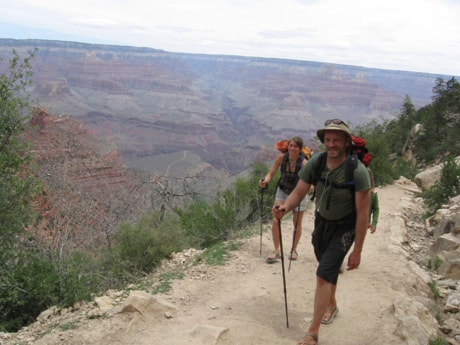It was a beautiful summer day when an assistant park manager in Minnesota rescued a hiker from getting lost — without ever leaving his office.
“I got a call from the sheriff, who said I had a lost hiker in the park,” Gary Hoeft said. “I said, I do? Usually I’m telling you that.”
The hiker had dialled 911 from his cellphone two hours into a hike.
He was connected to the Tettegouche State Park office, and Hoeft was able to locate him and talk him out of the woods.
“Within 15 minutes, he was in our park office,” Hoeft said.
“It was the easiest rescue I never went out on.”
The experience led Hoeft to believe that every hiker should take a cellphone into the wilderness.
But he and other wilderness experts also say that phones and technology such as personal locator beacons can cause problems.
There’s the nuisance factor: Calls that come in from folks who aren’t really lost, and the potential for chatter on otherwise quiet trails.
And there’s a serious risk in the false sense of security that technology can give.
“Having a cellphone doesn’t cover not being prepared,” Hoeft said.
As technology expands into wilderness areas, including state and national parks, it has made the promise of a rescue seem so simple that some hikers fail to prepare properly, and they take more risks.
Visitors to Grand Canyon National Park can listen to two-minute narrations from park rangers via cellphone.
But that’s also where a group attempting a difficult hike last fall summoned helicopters with a personal locator beacon — because the drinking water was too salty. Without the beacon, one of the hikers said, they would not have attempted the hike.
“Some days it saves lives and some days it makes headlines like this,” said Jeffrey Olson, spokesman for the National Park Service.
“They can be useful, but when you get into wilderness situations in national parks, there’s no guarantee of cellphone service.
‘People should be really careful about relying on it for emergency locators.”
There’s no national policy in the U.S. on cellphone usage in national parks.
In remote Yellowstone National Park, the debate has become heated because service is dependent on cell towers within park limits.
A tower near Old Faithful will be relocated to preserve the natural view, but Yellowstone spokesman Al Nash says visitor expectations have changed.
“Every possible technology and use is not appropriate for every conceivable location, but it would also be foolish not to acknowledge that in a place where one is driving a car and getting a hot meal and a bed, they wouldn’t expect other conveniences like cell service,” he said.
Cellphone service will be available only in major developed areas of the park, Nash said.
California, one of the first states to install wireless, in 52 state parks, has received praise from visitors.
Some come to the parks for the sole purpose of hooking up to the wi-fi, says California State Parks spokeswoman Sheryl Watson.
There also have been nuisance complaints, however; hearing other hikers’ phone conversations on backcountry trails isn’t exactly the escape many people are looking for.
Back in Minnesota, Paul Sundberg, manager of Gooseberry Falls State Park, recently asked his son to call him from his cellphone during a hiking trip to Sleeping Giant Provincial Park near Thunder Bay, Ont.
“Dad!” his son said.
“That would ruin my trip! I’m not going to use a cellphone in the middle of the wilderness.”
